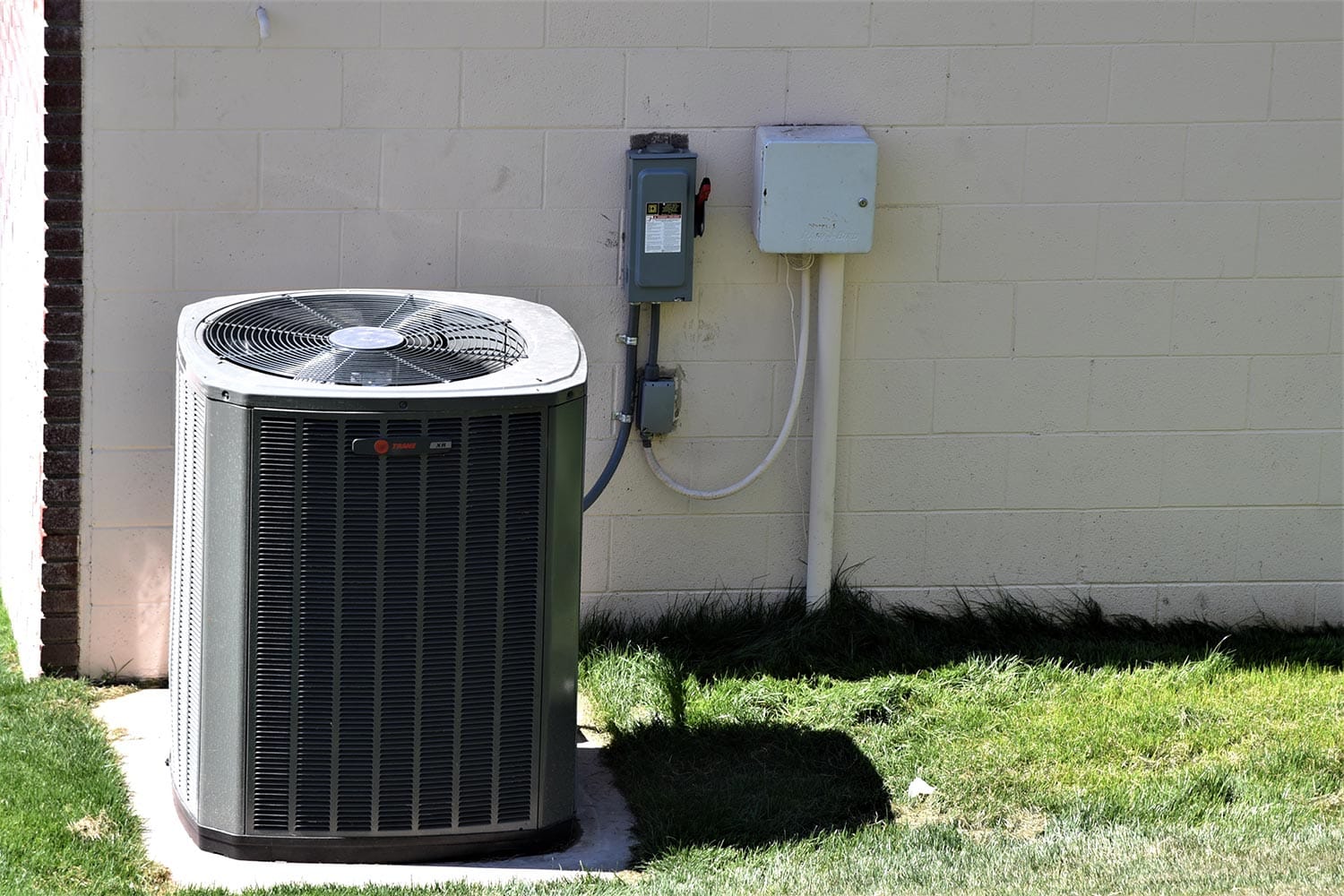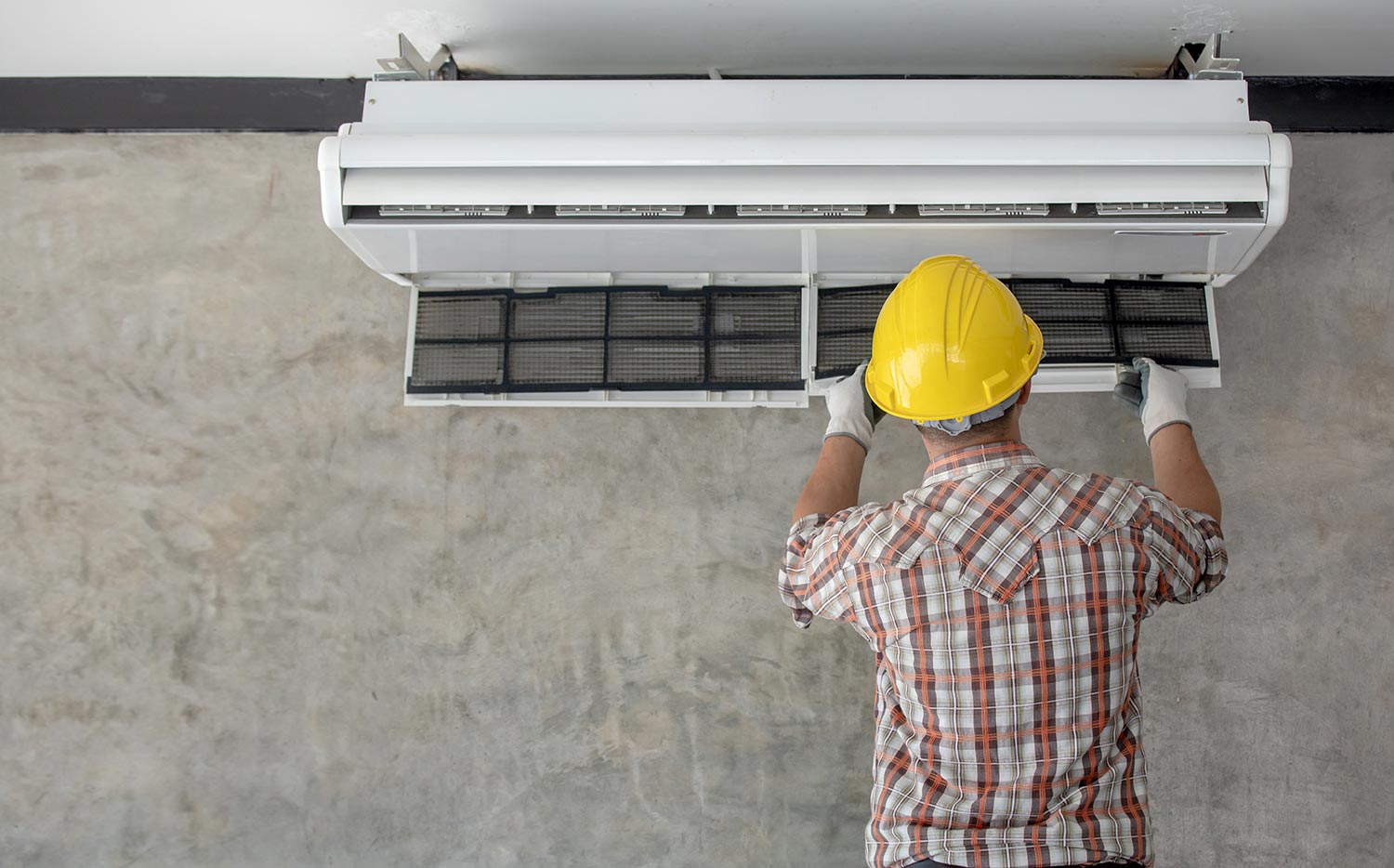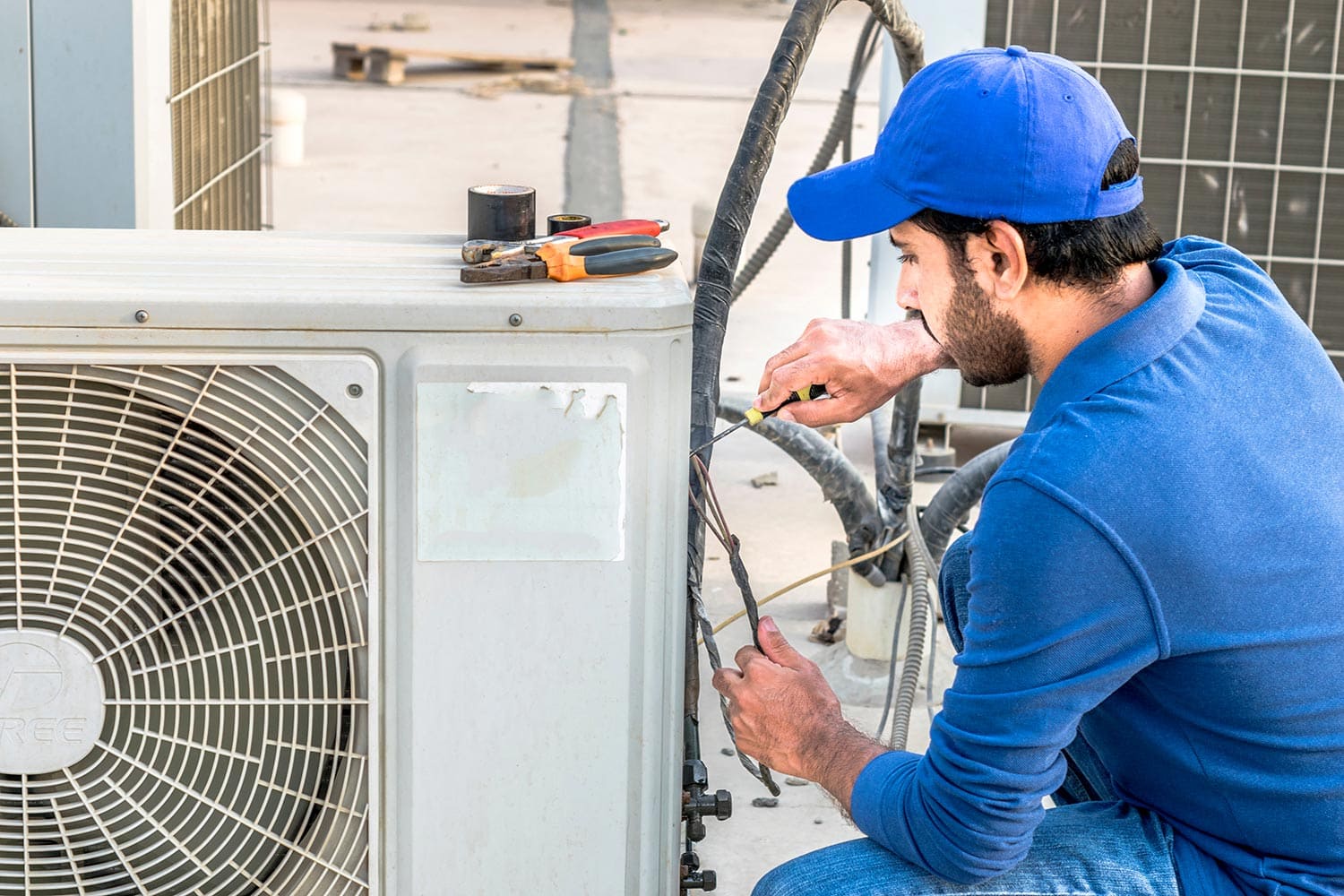Like all other AC units, Trane air conditioners have drain lines. Maintaining a clean air conditioner drain line can improve the operation of your air conditioner. But what if your drain lines clog? How do you drain water from your unit? We researched simple draining steps, and here's what we found.
One widely used, DIY-friendly, and effective drain cleaning technique is by utilizing vinegar. To drain your Trane AC unit using this method, you can follow these steps:
- Turn off the power at the main switch.
- Check the AC drain pan.
- Locate the drain line and disconnect it from the unit.
- Look for an access point and remove the cap at the end of your drain line
- Start pouring the distilled vinegar into your drain line and let it sit for 30 minutes.
- Wash out the vinegar with water. Check if the drain is clean and water is flowing freely.
- Reconnect the drain line and turn on the AC unit.
Although the vinegar method is used, other ways exist to unclog or clean the drain of your AC. Now, you may wonder, why use vinegar? How do you keep your AC drain clean to avoid clogging? You can read on to learn more about maintaining your Trane air conditioner.

Why Use Vinegar In Unclogging The AC Drain?
Flushing your AC drain line with vinegar is one of the most effective ways to clean it. You can eliminate algae, mildew, and other germs that can cause clogs in your AC drainpipe by pouring a cup of vinegar into it.

How Often Should Vinegar Be Used To Clean Drain Lines?
You should repeat this cleaning method regularly or every other month for best results and to maintain your AC drain-line-free. This will clear out any algae, mold, bacteria, or sludge that has built up in your AC drain pipe, preventing it from clogging.
What Makes An Air Conditioner Drain Get Clogged?
Clogging happens when moisture from your evaporator coil transports dirt, tiny debris, and other airborne particles into the condensate drain. Dirt and flying particles will eventually accumulate and clog the drain.
What Are The Signs That Your AC Drain Line Is Clogged?

Your unit's condensate drain pipe may be clogged for various reasons. You will know if your drain line is clogged when:
- Your AC emits a moldy smell.
- There is standing water visible in your AC unit.
- Areas near the indoor unit have been flooded.
- Your AC is not cooling.
- Your air conditioner turns off or doesn't switch on.
How To Drain AC Unit Using Dry/Wet Vacuum
Another alternative to dealing with clogged drain lines is using a dry/wet vacuum. You can follow these steps:
- Turn off the power at the main switch.
- Locate the drain line and disconnect it from the unit.
- Look for an access point and remove the cap at the end of your drain line. Remove any visible obstruction you can see in the drain line.
- Connect and attach the water hose to the drain line.
- Turn on the water hose and let it run continuously through the drain pipe.
- Connect and run a wet/dry vacuum to the drain line outside your home's drain.
- Disconnect the drain line from the vacuum.
- Reconnect the drain line and turn on the AC unit.
Where Is The AC Drain Pan Of An Air Conditioner Located?
Drain pans for air conditioners are a vital component of any cooling system. In addition to cooling, air conditioners dehumidify the damp air inside a room. As a result, condensation builds up inside the air conditioner and must be drained.
Drain pans on central air conditioners and room units collect condensation and allow it to flow outside.
Central AC System
A central air conditioner is typically installed in a furnace chamber above the furnace blower and combustion chamber. The unit's evaporator coils are positioned here, and the drain pan is directly beneath those coils.
Room AC System
Unlike a central air conditioner with the condenser outdoors, a room air conditioner has both the evaporator and the condenser inside its casing.
The evaporator coils are usually found just behind the front grille of the room air conditioner. The water gathers in the pan beneath the coils and drains into the condenser pan through a tube near the back of the device. The water drains through a hole or tube in the back of the air conditioner.
Repair Or Replace—How To Fix Damaged Drain Pan
Even the drip pan deteriorates over time, developing cracks and holes. When this happens, the water is no longer contained. Instead, it seeps down the walls, resulting in pools of water and excess moisture.
When the drain pan is damaged, replacing it is the best alternative. If you are unable to do so for some reason, the next best choice is to repair the existing one.
Repairing Cracked Drain Pan
Before you repair the cracks and holes, you will need to look over the extent of the damage to your drain pan first. To do this, you'll need a powerful flashlight and around a gallon of water to find the cracks.
- Start by turning off the power to your air conditioner.
- Remove the access panel after that. The drain pan should be located directly beneath the evaporator coils or the air handler.
- Turn on your flashlight for better sight, and slowly pour a gallon of water into the pan, observing the flow.
Note that water will trickle down drop by drop if the breach or cracks are minor, and it may flow down in a stream if the split or fissures are significant. If there are no cracks, the water can drain freely.
So now, how do you fix a damaged air conditioner drain pan? If you're not familiar with it, here's what you need to do:
- Turn the power off your air conditioner.
- Remove the access panel to reveal the drain pan.
- Repair the cracks, use a high-quality water-resistant sealer, and let it dry.
- Check if the cracks are properly sealed. Repeat the checking process to see how well the sealant holds.
- Put the access panel back into place and turn on the air conditioner.
Replacing Damaged Drain Pan
To replace a damaged drain pan, follow these steps:
- Turn the power off your air conditioner.
- Remove the air conditioner's front panel.
- Inspect the drain pan.
- Remove the drain pan.
- Place the new drain pan. Ensure it's connected to the drain port, the drain tube, and the drain pipe.
How To Keep An Air Conditioner's Drain From Clogging
Here are some ways to prevent AC drain line clogs:
- Regularly clean air filters. In addition, the air filters in your air conditioner should be of high quality.
- Flush your drain lines regularly. You can use vinegar to clean the drain lines.
- Install a condensate trap to keep air from entering the pipe during the operation of your air conditioner.
- Have your AC tested regularly to ensure it performs at its best.
How Often Should An Air Conditioner Service?
It's critical to have your air conditioner serviced by an HVAC professional regularly to avoid your air conditioner breaking.
Generally, having your air conditioner serviced by a professional twice a year, once in the spring and once in the fall, and having them diagnose and handle repairs is the best practice.
What Should An HVAC Technician Do When Servicing Your AC?

During routine AC maintenance and tune-ups, an expert HVAC technician is expected to do as follows:
- Inspect and clean all parts of your air conditioner.
- Do a test on your air conditioner to make sure it's working correctly.
- For maintenance in the spring, they will assist you in preparing your unit to offer cool air throughout the summer months.
- Analyze the wear and tear on your equipment in the fall.
Furthermore, frequent HVAC maintenance helps professionals detect minor faults before they become significant, costly problems.
How Much Does AC Maintenance Cost?

Air conditioning maintenance costs vary depending on where you reside and the labor cost in your location. According to a Fixr cost research study published on May 20, 2021, the national average price range for regular AC maintenance is between $100 and $150.
However, this cost only covers regular cleaning and tune-ups and includes examining, tightening, and testing all parts and minor part replacements like air filters and cleaning coils.
Final Words
Draining a Trane air conditioner is generally like how every other air conditioner should be drained. You'll be able to do the task by yourself.
In addition, correctly maintaining your air conditioner is better when you do it regularly and seek help from an HVAC professional when necessary.
If you want to learn more about air conditioner draining, you can check these related articles:
